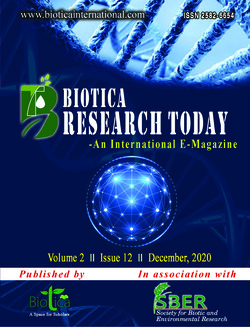
Immunomodulatory effects of a brown seaweed Sargassum fusiforme
Ambika Binesh*
Institute of Fisheries Post Graduate Studies, Tamil Nadu Dr. J. Jayalalithaa Fisheries University, OMR Campus, Vaniyanchavadi, Chennai, Tamil Nadu (603 103), India
Malathi Sampath
Institute of Fisheries Post Graduate Studies, Tamil Nadu Dr. J. Jayalalithaa Fisheries University, OMR Campus, Vaniyanchavadi, Chennai, Tamil Nadu (603 103), India
DOI: NIL
Keywords: Immunomodulator, Immunotherapy, Polysaccharides; Sargassum fusiforme
Abstract
Seaweed, particularly in Asian countries, has been used as food products and standard healing agents. Sargassum fusiforme (brown seaweed), as it is rich in dietary fibers and minerals such as calcium, iron, and magnesium, is commonly used in traditional cuisine. Due to its therapeutic benefits, in China, Korea, and Japan, as well as in the United Kingdom and North America, S. fusiforme remains common in diet.
Downloads
not found
Reference
Rasmussen, L., & Arvin, A., 1982. Chemotherapy-induced immunosuppression. Environmental Health Perspectives, 43, 21-25. https://doi.org/10.1289/ehp.824321.
Chen, X. M., Nie, W. J., Fan, S. R., Zhang, J. F., Wang, Y. X., Lu, J. X., &Jin, L. Q., 2012. A polysaccharide from Sargassum fusiforme protects against immunosuppression in cyclophosphamide-treated mice. Carbohydrate Polymers, 90, 1114-1119. https://doi.org/10.1016/j.carbp ol.2012.06.052.
Chen, L. J., Chen, P. C., Liu, J., Hu, C. X., Yang, S. S., He, D., … Zhang, X., 2018. Sargassum fusiforme polysaccharide SFP-F2 activates the NF-κB signaling pathway via CD14/IKK and P38 axes in RAW264.7 cells. Mar Drugs, 16, 264-279. https://doi.org/10.3390/md160 80264.
